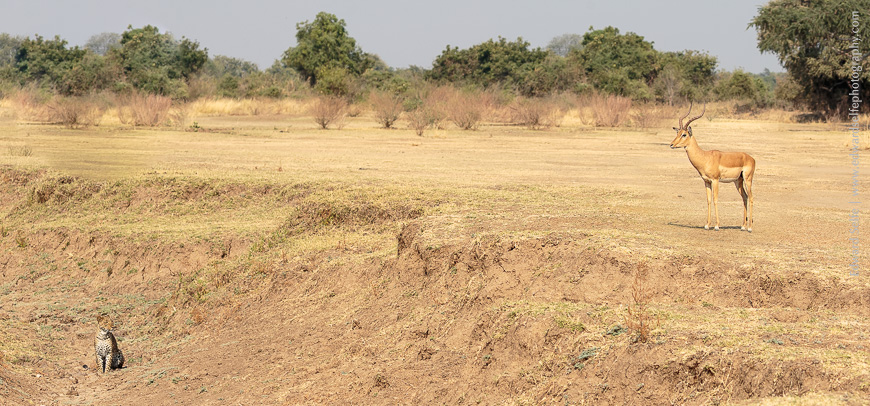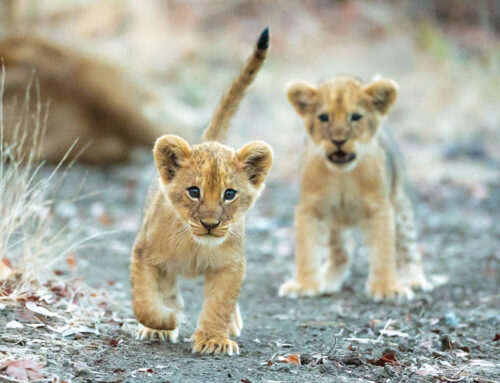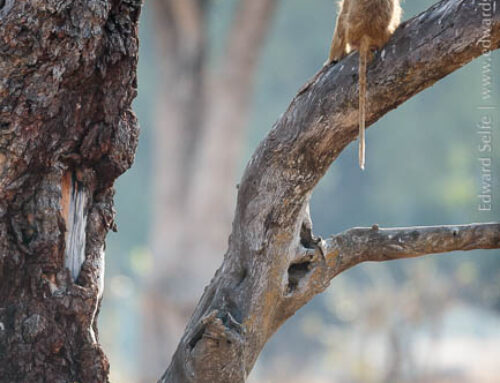“Oh, they’re just impala” is a phrase that we’ve all said – whether intentionally or accidentally – when the movement of ever-present impalas has drawn our eye. But on closer inspection, impalas reveal themselves to be beautiful, resourceful and abundant. And we should not mistake this abundance as a detractor; consider the volume of forage that the ecosystem must generate to accommodate the tens of thousands of impala that survive here.
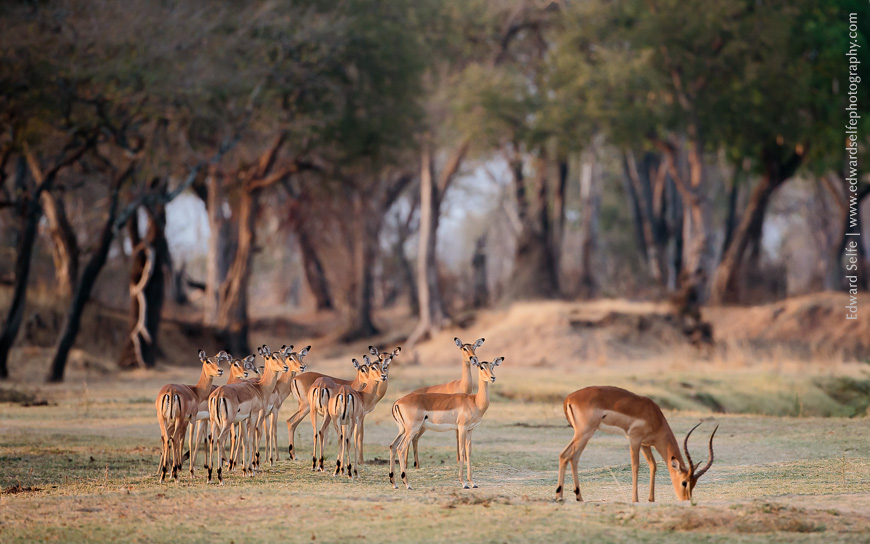
Impala are herd creatures, relying on numbers to stay safe; not only are there more eyes and ears to detect danger, but each impala in a large herd is unlikely to be the one targeted! Males are strongly territorial, defending an area of land against other males, and hoping females will share his patch. Better territories encompass access to water, shade, feeding grounds and night-time refuges. The fitter and stronger the male, the higher quality will be his territory and the better his chances of attracting females.
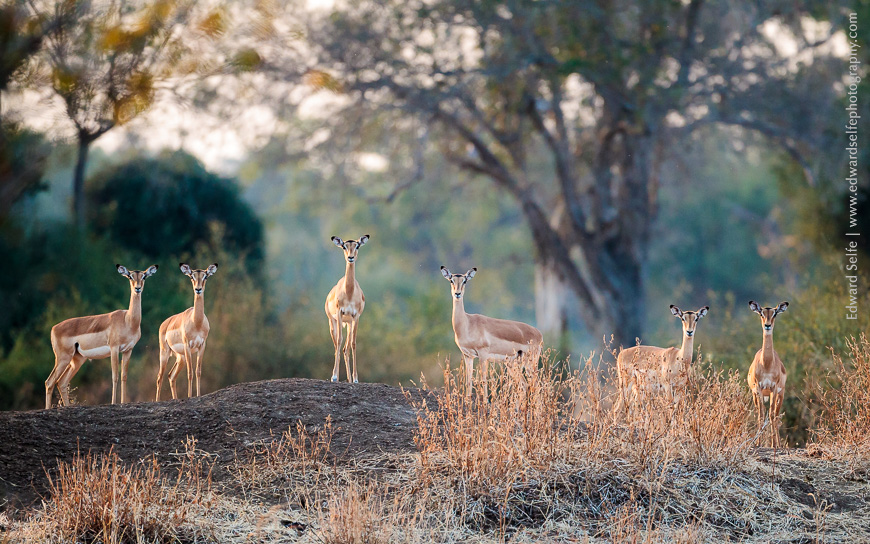
They are mixed feeders, taking both graze (grasses and herbs) and browse (such as leaves, flowers and fruits). When one source dwindles, they easily switch to another. Impala are often seen feeding on termite mounds in the dry season where nutrient-rich soil supports growth longer than in surrounding areas. These impala were happily feeding and lifted their heads only at the sound of my shutter!
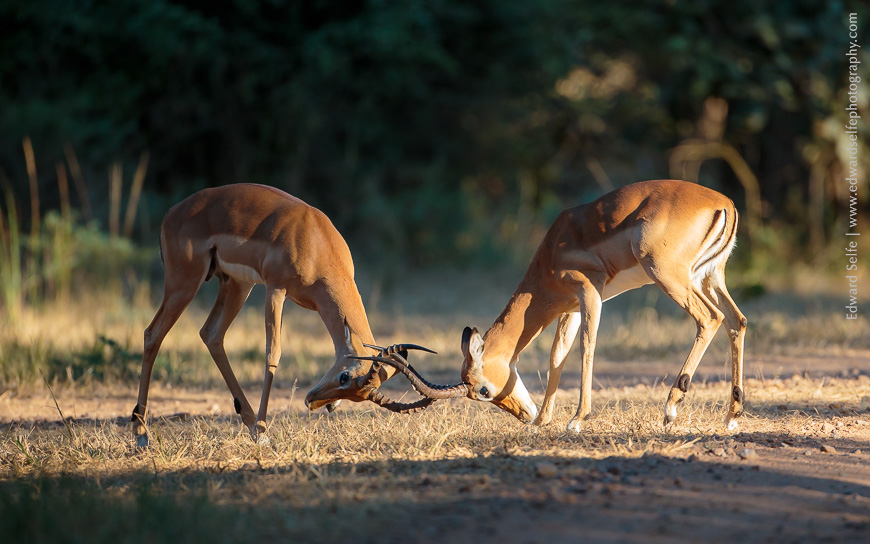
The impala rut occurs in the early dry-season and is an extremely noisy affair. Males compete to forge boundaries between their territories and battles are common. Few fights last longer than the initial clatter of horns, but evenly-matched pairs can occasionally wrestle for several minutes before a resolution is reached and the victor pursues the vanquished from his range.
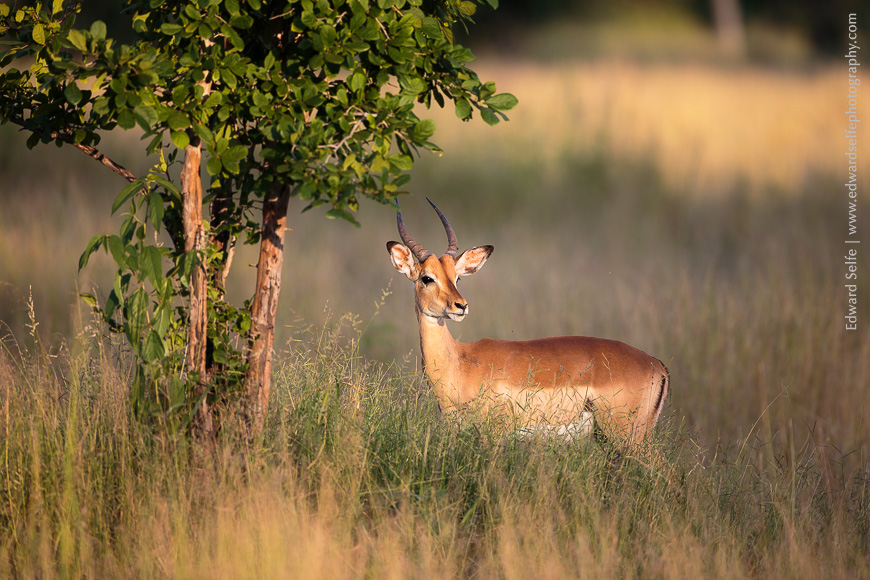
Sub-adult and vanquished males form batchelor herds which live in the marginal areas between the defended territories. These areas are often sub-optimal, giving little access to nourishment, or offering scant protection from predators! It is no accident that sub-adult males form a high percentage of the fatalities to leopards in Luangwa.
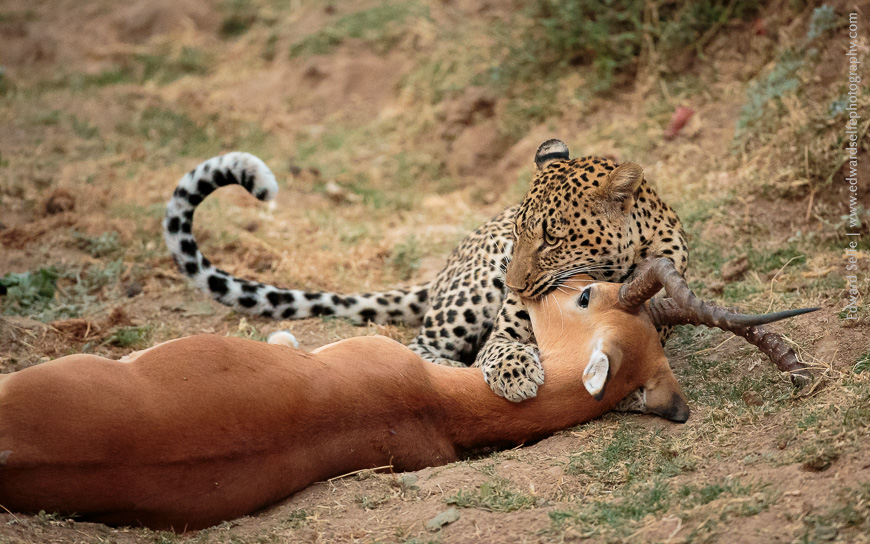
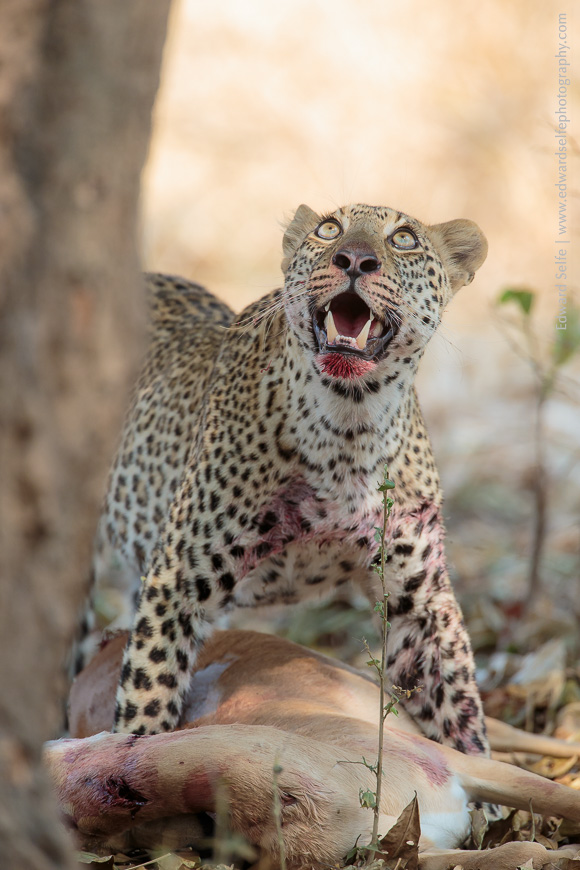
Impala are the most targeted prey for leopards, forming a substantial meal, but crucially one which can be hoisted into a tree to protect it from scavengers. These leopards both lost their meals, one to lions and the second to hyaena, because they were not able to reach the safety of a large tree.

In a display of fitness and agility, this impala “stotts” away from a hunting pack of wild dogs intent on making dinner out of one of his kin. Despite his series of impressive leaps, he clearly wasn’t paying attention and nearly ran into a lone dog that was joining the pack from its resting place elsewhere!!

Impala lambs are born in November, at the start of the rains, when their mothers will have sustained nourishment to provide quality milk. Within 6 months, they are weaned and learn to forage for themselves. With so many youngsters around, there is also the chance to learn life-skills such as mutual grooming.
